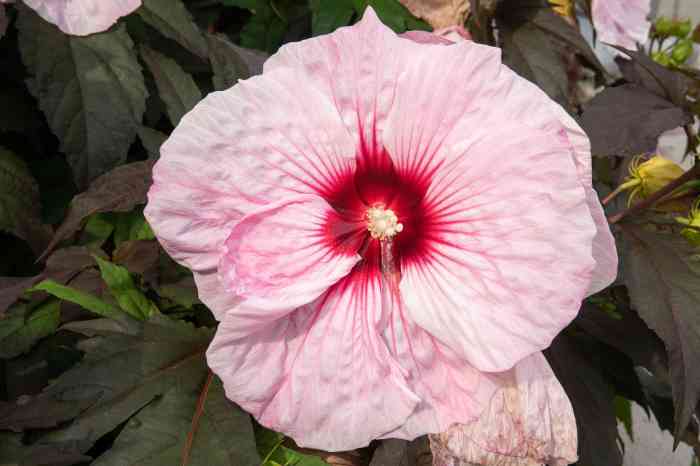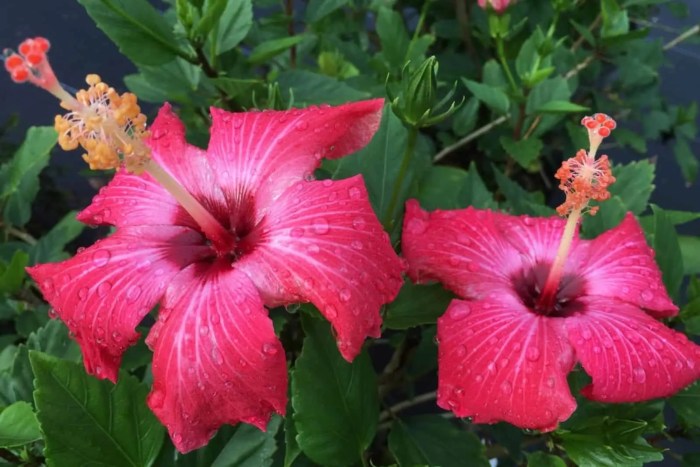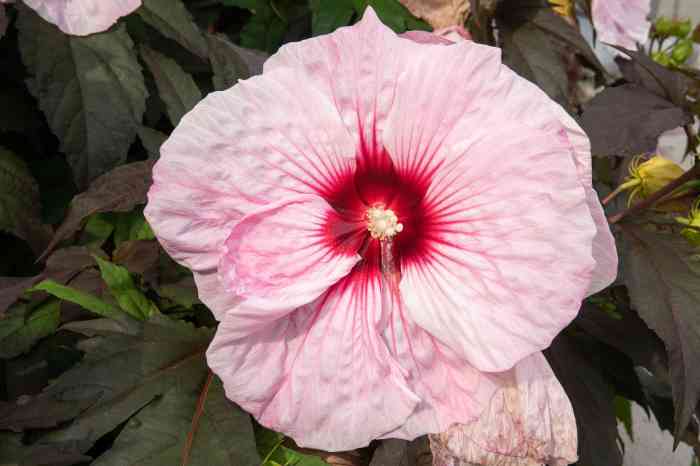Natural ways to help you sleep are often the best approach. This guide explores a range of techniques, from creating a relaxing bedtime routine to understanding the impact of diet and environment on your sleep quality. Discover how simple changes can significantly improve your sleep and overall well-being.
From calming bedtime rituals to the power of mindfulness, this exploration covers various aspects of sleep improvement. We’ll delve into the science behind natural sleep aids, discuss the role of diet and exercise, and ultimately empower you to create a personalized sleep strategy tailored to your needs.
Creating a Relaxing Bedtime Routine
A consistent bedtime routine is crucial for establishing a healthy sleep-wake cycle. This structured approach signals to your body that it’s time to wind down and prepare for sleep, improving sleep quality and overall well-being. By incorporating relaxation techniques into your routine, you can effectively manage stress and promote a more peaceful transition into sleep.A well-designed bedtime routine acts as a bridge between your active day and your restful night.
It helps to calm the mind and body, reducing racing thoughts and physical tension, ultimately leading to deeper and more restorative sleep. By creating a predictable sequence of activities, you train your body to recognize the cues associated with sleep, making it easier to fall asleep and stay asleep throughout the night.
Wind-Down Phase
This initial phase is designed to gradually transition you from your day’s activities to a state of relaxation. It’s crucial to avoid stimulating activities during this time.
- Dim the Lights (60 minutes before bed): Reducing exposure to bright light helps regulate melatonin production, a hormone essential for sleep. Lowering the lights in your home can trigger your body’s natural sleep-wake cycle.
- Unplug from Screens (60 minutes before bed): The blue light emitted from electronic devices can interfere with melatonin production, hindering sleep onset. Put away your phone, tablet, and computer to allow your mind to unwind.
- Relaxing Activity (30 minutes before bed): Engage in a calming activity like reading a book, listening to soothing music, or taking a warm bath. Choose an activity that promotes relaxation without stimulating your mind or body.
Mindfulness Phase
This phase focuses on bringing awareness to the present moment, reducing stress and anxiety, and promoting a sense of calm.
- Mindful Breathing (15 minutes before bed): Engage in deep, conscious breathing exercises. Focus on the sensation of each breath entering and leaving your body. This practice can help to quiet the mind and reduce racing thoughts.
- Meditation (10 minutes before bed): Guided meditations can help to clear your mind and reduce stress. Select a guided meditation specifically designed for relaxation and sleep. Many free resources are available online.
Sleep Preparation Phase
This final phase focuses on preparing your body and environment for sleep.
- Prepare Your Sleep Environment (10 minutes before bed): Make sure your bedroom is dark, quiet, and cool. Use blackout curtains, earplugs, or a white noise machine if needed.
- Hydrate Responsibly (1 hour before bed): Avoid drinking excessive liquids before bed, as this can lead to frequent bathroom trips. A small glass of water is fine.
- Light Snack (Optional): A small, light snack can help regulate blood sugar levels and promote better sleep for some individuals. Avoid heavy or sugary foods, which can disrupt sleep.
Relaxation Techniques Comparison
| Technique | Description | Pros | Cons |
|---|---|---|---|
| Deep Breathing | Involves slow, deep inhalations and exhalations. | Simple, accessible, and can be done anywhere. | May not be effective for everyone, especially those with anxiety or respiratory conditions. |
| Progressive Muscle Relaxation | Involves tensing and releasing different muscle groups. | Can effectively reduce physical tension. | Can be time-consuming and requires practice. |
| Guided Imagery | Involves visualizing peaceful scenes or situations. | Can be highly effective for relaxation and stress reduction. | Requires concentration and may not be suitable for all individuals. |
Mindfulness and Meditation Practices

Cultivating a calm and focused mind is crucial for achieving restful sleep. Mindfulness practices, which involve paying attention to the present moment without judgment, and meditation, a practice that trains the mind to focus and quiet internal chatter, can significantly reduce stress and promote relaxation, ultimately leading to better sleep quality. Integrating these practices into your bedtime routine can create a pathway to peaceful nights and rejuvenating mornings.Mindfulness and meditation work by calming the sympathetic nervous system, which is responsible for the body’s “fight or flight” response.
When activated, this system produces stress hormones that interfere with sleep. By quieting the mind through mindfulness and meditation, individuals can help regulate these responses, leading to a more relaxed state conducive to sleep.
Mindfulness Techniques for Sleep
Mindfulness involves paying attention to your thoughts, feelings, and bodily sensations without judgment. Several mindfulness techniques can be incorporated into a sleep routine. Focusing on your breath is a fundamental technique. Paying attention to the sensation of each inhale and exhale, noticing the rise and fall of your chest or abdomen, can anchor you in the present moment, reducing racing thoughts.
Ever looking for natural ways to improve your sleep? Sometimes, seemingly unrelated issues can affect your rest, like skin peeling on hands, which can be super uncomfortable. If you’re dealing with that, checking out this resource on skin peeling on hands might provide some helpful insights. But, focusing on natural sleep aids like a calming bedtime routine and avoiding caffeine before bed can significantly improve your sleep quality.
Body scans, a practice of bringing awareness to different parts of the body, can identify areas of tension and promote relaxation. Mindful walking or gentle stretching can also be practiced before bed. These techniques help shift focus from worries about the day or tomorrow to the present moment.
Guided Meditations for Sleep
Guided meditations specifically designed for sleep often utilize calming music, soothing voices, and specific instructions to help induce relaxation. These guided meditations often focus on reducing stress and anxiety, which are common culprits of sleeplessness. Many apps and websites offer a variety of guided meditations for sleep. Examples include meditations focusing on progressive muscle relaxation, loving-kindness meditation, or visualization techniques.
These methods help calm the mind, reduce racing thoughts, and encourage a sense of peace and well-being, which are crucial for a restful night’s sleep.
Meditation Styles and Their Benefits for Sleep
Different meditation styles can have varying effects on the body and mind, potentially influencing sleep quality. A table outlining some styles and their potential benefits for sleep is presented below.
| Meditation Style | Potential Benefits for Sleep |
|---|---|
| Mindful Breathing | Reduces racing thoughts, calms the nervous system, promotes relaxation. |
| Body Scan Meditation | Identifies and releases physical tension, promotes deep relaxation, enhances body awareness. |
| Loving-Kindness Meditation | Cultivates feelings of compassion and warmth, reduces stress and anxiety, promotes emotional well-being, which can indirectly support sleep. |
| Progressive Muscle Relaxation | Releases physical tension, promotes deep relaxation, helps manage stress, improves sleep quality. |
| Visualization Meditation | Creates a sense of calm and peace, promotes a positive mental state, helps to quiet the mind before sleep. |
The table above presents a general overview. Individual experiences may vary. Exploring different styles and finding what resonates with you is key to reaping the potential benefits of meditation for better sleep.
Dietary Considerations for Sleep
A healthy diet plays a crucial role in overall well-being, and sleep is no exception. What you eat and drink before bed can significantly impact the quality and duration of your sleep. Understanding the relationship between specific foods, drinks, and sleep can empower you to make informed choices that support a restful night’s sleep.Dietary choices have a profound effect on your body’s ability to relax and prepare for sleep.
Certain foods and drinks can either promote a calm and restful state, while others can hinder your sleep cycle, causing you to toss and turn. Knowing which foods to incorporate and which to avoid can make a substantial difference in the quality of your sleep.
Foods That Promote Sleep
Consuming certain foods rich in tryptophan, a precursor to serotonin and melatonin, can aid in the natural sleep process. These foods, often high in protein and complex carbohydrates, can help regulate your body’s sleep-wake cycle. Examples include warm milk, bananas, and nuts.
- Warm Milk: Milk contains tryptophan, an amino acid that aids in the production of melatonin, a hormone crucial for regulating sleep. The warmth of the milk can also contribute to a sense of relaxation.
- Bananas: Bananas are rich in potassium, magnesium, and tryptophan, all vital nutrients for a healthy sleep cycle. They also provide a natural sweetness that can be satisfying without being overly stimulating.
- Nuts: Almonds, cashews, and walnuts are excellent sources of magnesium, which can help to relax muscles and promote a sense of calm, contributing to a more restful sleep.
- Complex Carbohydrates: Foods like oats and brown rice provide sustained energy release, avoiding the blood sugar spikes that can disrupt sleep. These carbohydrates also contain tryptophan, which is essential for melatonin production.
Foods and Drinks to Avoid Before Bed
Certain foods and drinks can interfere with your sleep cycle due to their stimulating properties or the way they affect your digestive system.
- Spicy Foods: Spicy foods can trigger indigestion and heartburn, leading to discomfort and difficulty falling asleep. The heat and acidity can disrupt your digestive process, making it harder to relax and fall asleep.
- Large Meals: Eating a large meal close to bedtime can overwork your digestive system, preventing your body from fully relaxing and preparing for sleep. The process of digestion requires significant energy, diverting resources from sleep preparation.
- Caffeine and Alcohol: Caffeine is a stimulant that can interfere with your sleep cycle, making it difficult to fall asleep and leading to restless nights. Alcohol, while initially promoting drowsiness, can disrupt the quality of sleep later in the night, leading to fragmented and less restorative sleep.
- Sugary Foods: Sugary foods cause a rapid spike in blood sugar, followed by a crash. This blood sugar fluctuation can disrupt your sleep cycle, causing you to wake up feeling restless or hungry.
Hydration and Sleep
Proper hydration is essential for various bodily functions, including sleep. Dehydration can lead to a range of issues, including headaches, fatigue, and difficulty falling asleep.
- Adequate Water Intake: Drinking enough water throughout the day is crucial for overall health and sleep quality. Staying hydrated helps your body function optimally, including the processes involved in preparing for sleep.
- Avoiding Excess Fluids Before Bed: Drinking too much water or other fluids close to bedtime can lead to frequent trips to the bathroom, disrupting your sleep. Plan your fluid intake strategically throughout the day to avoid this issue.
Foods and Beverages and Their Potential Effects on Sleep
The table below summarizes the potential effects of various foods and beverages on sleep quality.
| Food/Beverage | Potential Effect on Sleep |
|---|---|
| Warm Milk | Promoting |
| Bananas | Promoting |
| Nuts (Almonds, Cashews, Walnuts) | Promoting |
| Complex Carbohydrates (Oats, Brown Rice) | Promoting |
| Spicy Foods | Hindering |
| Large Meals | Hindering |
| Caffeine | Hindering |
| Alcohol | Hindering (initially promoting, then disrupting) |
| Sugary Foods | Hindering |
| Water (Adequate Intake) | Promoting |
| Excess Fluids Before Bed | Hindering |
Environmental Factors Affecting Sleep
Creating a sleep-conducive environment is crucial for optimal sleep quality. Your bedroom isn’t just a place to sleep; it’s a sanctuary designed to promote relaxation and prepare your body for rest. Factors like temperature, light, and noise significantly influence your sleep patterns. Understanding and addressing these environmental elements can dramatically improve your sleep experience.
The Importance of a Conducive Sleep Environment
A conducive sleep environment minimizes distractions and promotes a sense of calm, crucial for initiating and maintaining sleep. A well-designed bedroom fosters a physiological response to rest, setting the stage for deep, restorative sleep. By optimizing factors like temperature, light, and noise, you can significantly enhance your sleep quality and overall well-being.
Temperature Regulation for Sleep
Maintaining a comfortable room temperature is vital for a good night’s sleep. Studies show that a slightly cool room (around 60-67°F or 15-19°C) is often ideal for most individuals. Extreme temperatures, whether too hot or too cold, can disrupt sleep cycles and lead to discomfort, hindering the body’s natural ability to relax and enter deep sleep. Consider using blankets or extra layers to adjust to the temperature as needed, or use a programmable thermostat to maintain consistent temperature.
Light Control and Its Impact on Sleep
Light significantly impacts your body’s natural sleep-wake cycle, regulated by the hormone melatonin. Exposure to bright light, especially in the hours leading up to bedtime, can suppress melatonin production, making it harder to fall asleep. Minimizing light exposure in the evening is paramount for a smooth transition into sleep. Darkness promotes the release of melatonin, the hormone responsible for sleepiness.
Use blackout curtains, eye masks, or sleep shades to block out external light. Ensure that electronic devices like phones and tablets are not emitting light in your bedroom, as the blue light they emit can interfere with melatonin production.
Noise Control and Sleep Disturbances
Noise, whether loud or persistent, can disrupt sleep and lead to fragmented sleep. The constant sounds of traffic, neighbors, or even indoor appliances can interfere with your sleep cycle, making it difficult to achieve deep, restful sleep. Consistent exposure to noise disrupts the natural sleep cycle, impacting the quality of sleep. Consider using earplugs, white noise machines, or sound-dampening curtains to reduce the impact of noise on your sleep.
Optimizing Bedroom Conditions for Better Sleep
Optimizing your bedroom environment for better sleep involves several key strategies.
- Maintain a consistent sleep schedule: Going to bed and waking up around the same time each day, even on weekends, helps regulate your body’s natural sleep-wake cycle. This consistency creates a predictable sleep-wake rhythm.
- Minimize light exposure before bed: Reduce the amount of light exposure in the hours leading up to bedtime. Dim the lights, avoid using electronic devices, and use blackout curtains or eye masks.
- Create a relaxing bedtime routine: A relaxing bedtime routine signals to your body that it’s time to wind down. Engage in calming activities such as reading, taking a warm bath, or listening to soothing music.
- Control noise levels: Use earplugs, white noise machines, or sound-dampening curtains to minimize noise disturbances. Ensure your bedroom is quiet and peaceful.
Table of Environmental Factors Affecting Sleep
| Factor | Impact on Sleep | Suggested Solutions |
|---|---|---|
| Temperature | Disrupts sleep cycles at extremes, leading to discomfort. | Maintain a cool room temperature (around 60-67°F or 15-19°C). Use blankets or adjust thermostat as needed. |
| Light | Suppresses melatonin production, hindering sleep onset. | Minimize light exposure before bed. Use blackout curtains, eye masks, or sleep shades. Avoid electronic devices emitting blue light before bed. |
| Noise | Disrupts sleep cycles, leading to fragmented sleep. | Use earplugs, white noise machines, or sound-dampening curtains. Minimize noise sources in the bedroom. |
Physical Activity and Sleep

Physical activity plays a significant role in our overall well-being, and sleep is no exception. A healthy relationship between exercise and sleep is crucial for optimal physical and mental health. The right type and timing of exercise can significantly improve sleep quality, while poor choices can disrupt it. This section explores the intricate connection between physical activity and sleep, highlighting key factors to consider for a better night’s rest.Regular physical activity, including exercise, promotes better sleep by improving both the quality and quantity of sleep.
It helps regulate the body’s natural sleep-wake cycle and can reduce the time it takes to fall asleep. Exercise also boosts energy levels during the day, which can indirectly lead to better sleep at night.
Optimal Timing for Physical Activity
The timing of exercise significantly impacts sleep quality. Ideally, strenuous exercise should be avoided close to bedtime. Engaging in intense physical activity too close to sleep can lead to elevated body temperature and adrenaline levels, making it harder to fall asleep. The ideal timing for exercise is several hours before sleep. This allows the body to cool down and the nervous system to calm down.
This period gives the body time to adjust to a more relaxed state, preparing it for sleep.
Impact of Different Types of Exercise
Different types of exercise can affect sleep differently. High-intensity interval training (HIIT), for example, can sometimes stimulate the body and make it more difficult to fall asleep. Low-intensity activities, such as yoga or stretching, are generally more conducive to relaxation and better sleep. The type of exercise should be chosen based on personal preferences and needs. Choosing an activity that promotes relaxation and calmness is more likely to improve sleep quality.
Relationship Between Physical Activity Intensity and Sleep Quality
The intensity of physical activity has a direct impact on sleep quality. While moderate-intensity exercise generally improves sleep, extremely intense exercise too close to bedtime can negatively impact sleep quality. Moderate-intensity activities, such as brisk walking or cycling, have been shown to improve sleep quality significantly. Conversely, intense activities, like high-intensity interval training or weightlifting, can sometimes lead to sleep disruption if performed too close to bedtime.
The intensity of exercise should be tailored to individual needs and preferences, taking into account the timing and overall sleep goals.
Finding natural ways to help you sleep can be a game-changer, especially when dealing with health issues like Irritable Bowel Disease (IBD). Sometimes, insurance companies can make it difficult to afford the necessary medication, which can significantly impact your sleep quality. Navigating situations like when insurance denies your IBD medication can be incredibly stressful when insurance denies your ibd medication , but focusing on natural sleep aids like chamomile tea or a relaxing bedtime routine can help you cope.
Ultimately, prioritizing sleep through natural means can be a crucial part of managing stress and improving overall health.
Herbal Remedies for Sleep
Herbal remedies have long been used to promote relaxation and improve sleep quality. Many individuals seek natural alternatives to prescription sleep aids, drawn to the perceived safety and gentler approach of these plant-derived remedies. However, it’s crucial to understand that while some herbs may offer benefits, they can also pose risks, and their effectiveness varies greatly.Using herbal remedies for sleep should be approached with caution and in consultation with a healthcare professional, especially if you have pre-existing health conditions or are taking other medications.
It’s essential to remember that herbal remedies are not a substitute for proper medical care and should be used as part of a comprehensive sleep strategy.
Common Herbal Remedies for Sleep, Natural ways to help you sleep
A variety of herbs are traditionally used to aid sleep. Understanding their potential effects can help you make informed decisions about incorporating them into your bedtime routine.
- Chamomile is a well-known herb with calming properties. It is often used to reduce anxiety and promote relaxation, which can contribute to better sleep. The calming effect of chamomile is thought to be due to its flavonoid content, which has antioxidant properties. Some studies suggest that chamomile tea can help reduce insomnia symptoms.
- Lavender, often used in aromatherapy, is another popular sleep aid. Its calming aroma is thought to reduce stress and promote relaxation, leading to improved sleep. Lavender’s purported sleep-promoting effects are supported by research demonstrating its potential to lower cortisol levels, a hormone associated with stress.
- Valerian Root is a common herbal remedy used for sleep. It is believed to have a mild sedative effect, helping to reduce anxiety and promote relaxation, potentially leading to improved sleep quality. While some research supports its effectiveness, the quality and dosage of valerian root products can vary significantly.
- Passionflower is a plant known for its relaxing effects. It’s often used to treat anxiety and promote calmness, creating a more conducive environment for sleep. Some research indicates that passionflower may help regulate sleep cycles and reduce insomnia symptoms.
Potential Risks and Benefits
Using herbal remedies for sleep comes with both potential benefits and risks. While generally considered safe, certain individuals may experience adverse reactions.
- Benefits: Herbal remedies may offer a gentle approach to sleep promotion, potentially reducing anxiety and promoting relaxation. Their use can sometimes be less disruptive to natural sleep cycles compared to some prescription sleep aids.
- Risks: Some individuals may experience allergic reactions, such as skin rashes or hives. Interactions with other medications are possible, potentially leading to unwanted side effects. It’s important to note that the quality and potency of herbal remedies can vary greatly between brands and preparations. Furthermore, some herbal remedies can interact with certain medications, potentially reducing their effectiveness or causing adverse reactions.
Finding natural ways to help you sleep can be a real game-changer. While some people swear by herbal teas, others are curious about if kombucha can aid in weight loss. Interestingly, the potential benefits of kombucha for weight loss are often discussed, but research on its effects is still ongoing. Does kombucha help you lose weight ?
Ultimately, a balanced diet and regular sleep hygiene are crucial for a healthy lifestyle, and a good night’s rest will support your overall well-being.
Always consult a healthcare professional before using herbal remedies, especially if you have any underlying health conditions or are taking other medications.
Comparing the Effectiveness of Herbal Remedies
While various herbal remedies claim to improve sleep, their effectiveness can differ. There’s no definitive ranking of effectiveness, and individual responses can vary.
- Varied Effects: The effectiveness of herbal remedies for sleep can vary significantly depending on factors such as individual physiology, the specific herb used, and the quality of the product. Some people find that chamomile tea promotes relaxation and improves sleep, while others may experience minimal effects.
- Individual Differences: Factors like individual sensitivities and the severity of sleep issues can affect the effectiveness of a particular herbal remedy. What works for one person may not work for another.
Natural Sleep Aids and Supplements
Beyond lifestyle changes and environmental adjustments, exploring natural sleep aids and supplements can be a helpful step in improving your sleep quality. These options often offer a gentler approach, but it’s crucial to understand their potential benefits and risks before incorporating them into your routine. Remember, consulting with a healthcare professional is always recommended before starting any new supplement regimen.Natural sleep aids often work by targeting specific pathways in the body that contribute to sleep regulation.
While they can be beneficial, they should be considered as part of a comprehensive sleep improvement strategy rather than a standalone solution. Individual responses to natural sleep aids can vary significantly.
Melatonin and Magnesium: Key Players in Sleep
Melatonin and magnesium are two minerals and hormones frequently associated with sleep regulation. Melatonin is a hormone naturally produced by the pineal gland, playing a crucial role in regulating the sleep-wake cycle. Magnesium, on the other hand, is involved in numerous bodily functions, including muscle relaxation and nerve function. Both substances contribute to the creation of a calming environment within the body, conducive to sleep.
Sufficient levels of these elements can positively influence sleep quality.
A Look at Natural Sleep Aids
Natural sleep aids encompass a wide range of substances, each with purported benefits. Understanding the potential benefits and risks of these supplements is crucial before incorporating them into your routine.
| Natural Sleep Aid | Purported Benefits | Potential Side Effects |
|---|---|---|
| Melatonin | Helps regulate the sleep-wake cycle, potentially useful for jet lag or shift work, and for individuals with irregular sleep schedules. | Drowsiness, headache, dizziness, nausea, interactions with certain medications. |
| Chamomile | Known for its calming properties, potentially promoting relaxation and sleep. | Allergic reactions in some individuals, interactions with certain medications. |
| Lavender | Often used for its calming aroma, potentially promoting relaxation and sleep. | Allergic reactions, interactions with certain medications. |
| Valerian Root | May promote relaxation and reduce anxiety, potentially aiding sleep. | Drowsiness, headache, dizziness, interactions with certain medications. |
| L-Theanine | An amino acid that may promote relaxation and reduce stress, potentially improving sleep. | Mild stomach upset, interactions with certain medications. |
| Passionflower | May help reduce anxiety and promote relaxation, potentially improving sleep. | Drowsiness, interactions with certain medications. |
| Magnesium | Plays a role in various bodily functions, including muscle relaxation and nerve function, potentially contributing to a more restful sleep. | Diarrhea, nausea, abdominal cramps, interactions with certain medications. |
“Always consult with a healthcare professional before taking any new supplements, especially if you have underlying health conditions or are taking other medications.”
Creating a Personalized Sleep Strategy: Natural Ways To Help You Sleep
Crafting a sleep strategy that works for you is more than just following a generic routine. It’s about understanding your unique needs and preferences, and tailoring a plan that aligns with your lifestyle and individual sleep requirements. This personalized approach is key to achieving consistent, high-quality sleep. By considering various factors and committing to a consistent approach, you can create a sleep plan that sets you up for success.A personalized sleep strategy is a dynamic process, not a one-size-fits-all solution.
Understanding your body’s signals and adjusting your approach based on your response is crucial. It’s about actively listening to your body’s needs and adapting your plan as necessary. This proactive approach allows for flexibility and accommodates life’s inevitable changes, making it easier to maintain healthy sleep patterns.
Factors to Consider
Understanding your body’s natural rhythms and sleep-wake cycle is fundamental. Your chronotype, or natural sleep-wake cycle, influences your optimal sleep schedule. Are you a “morning lark” or a “night owl”? Recognizing your body’s internal clock is essential. Lifestyle factors, such as work schedule, social commitments, and exercise routines, play a significant role.
Consistency in your sleep schedule is paramount for a healthy sleep-wake cycle. Stress levels, both physical and emotional, impact your sleep quality. Medical conditions and medications also need to be considered. Your diet and physical activity habits have a direct impact on your sleep. Identifying these factors and understanding how they interact will guide you in creating a plan that caters to your individual needs.
Developing Your Sleep Plan
Developing a personalized sleep plan is a systematic process that involves several steps. Begin by identifying your current sleep habits and patterns. Track your sleep schedule, noting when you typically fall asleep and wake up, and how you feel during the day. This baseline understanding will help you identify areas for improvement.
Step-by-Step Approach
- Assess Your Current Sleep Habits: Keep a sleep diary for a week. Record the time you go to bed, the time you wake up, and how you feel throughout the day. Note any factors that might have influenced your sleep (stress, diet, exercise, etc.). This baseline data is crucial for tailoring a plan.
- Identify Your Chronotype: Determine whether you’re a morning person or a night person. Understanding your natural sleep-wake cycle will help you align your schedule with your body’s rhythms. Morning larks often find it easier to wake up early and fall asleep early, while night owls may prefer later bedtimes and wake-up times.
- Establish a Consistent Sleep Schedule: Aim for a regular sleep schedule, even on weekends. Consistency reinforces your body’s natural sleep-wake cycle, improving sleep quality over time. Aim for 7-9 hours of sleep per night, based on your individual needs.
- Optimize Your Sleep Environment: Ensure your bedroom is dark, quiet, and cool. Invest in blackout curtains, earplugs, or a white noise machine if needed. A comfortable mattress and pillows are also essential.
- Manage Stress and Anxiety: Incorporate relaxation techniques like meditation or deep breathing exercises into your bedtime routine. Limit screen time before bed, as the blue light emitted from electronic devices can interfere with melatonin production.
- Adjust Your Diet and Exercise: Avoid caffeine and alcohol before bed. Regular physical activity can promote better sleep, but avoid exercising too close to bedtime. A balanced diet rich in nutrients is important for overall well-being and sleep.
- Monitor and Adapt: Regularly review your sleep plan and make adjustments as needed. Your sleep needs may change over time, so it’s essential to be flexible and responsive. If you’re not seeing improvements, consult with a healthcare professional.
Importance of Consistency and Patience
Consistency is key to improving sleep quality. A consistent sleep schedule helps regulate your body’s natural sleep-wake cycle. Patience is equally important. Improving sleep is a gradual process, and it takes time to see results. Don’t get discouraged if you don’t see immediate changes.
Be patient, persistent, and celebrate small victories along the way. A personalized sleep strategy, combined with consistency and patience, is a powerful tool for achieving better sleep.
End of Discussion
In conclusion, achieving restful sleep is a journey of self-discovery. By implementing these natural strategies, you can cultivate a healthy sleep cycle that enhances your physical and mental well-being. Remember that consistency and patience are key to seeing results. Creating a personalized sleep plan that integrates the tips discussed in this guide can set you on a path to better sleep and a more energized you.




























